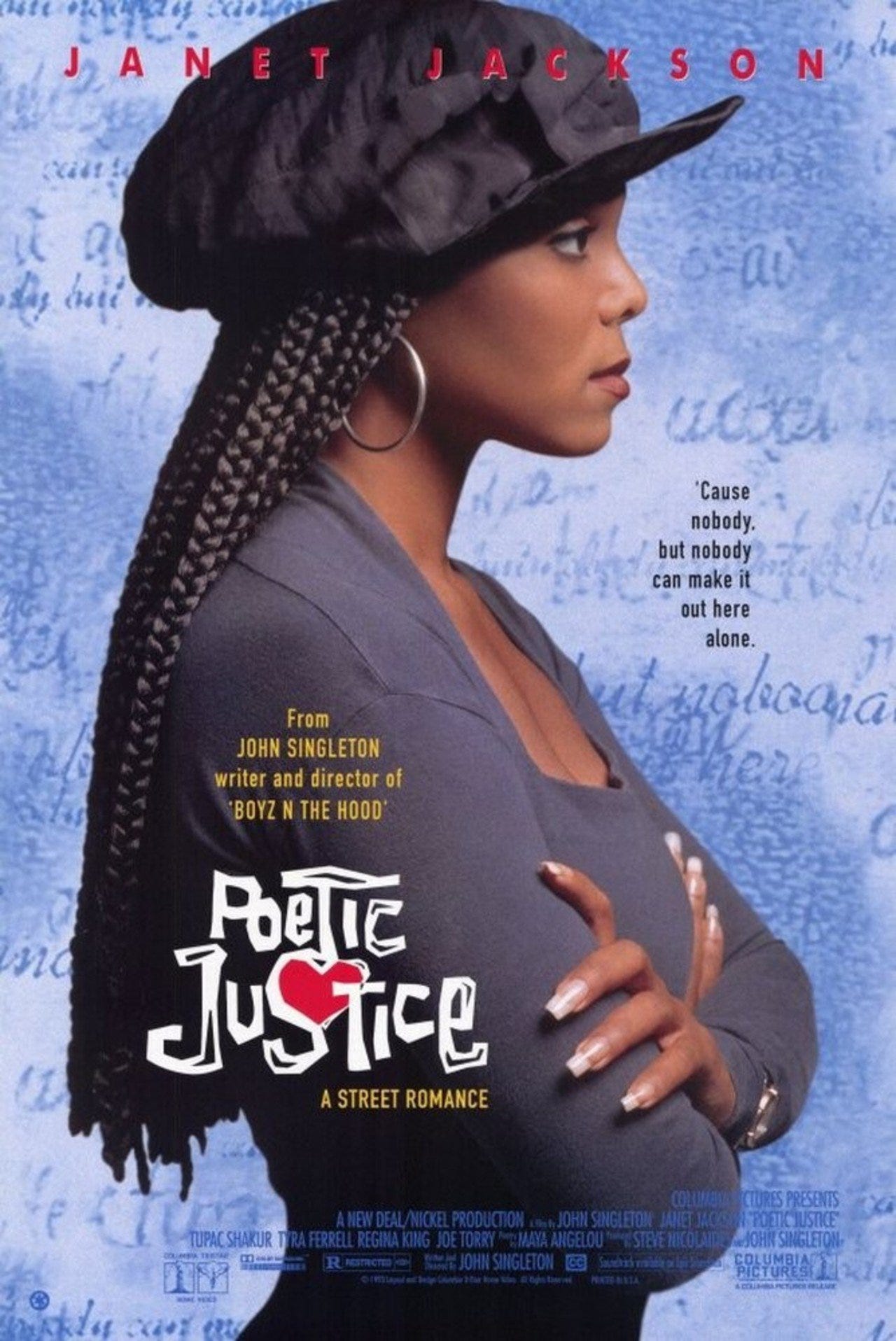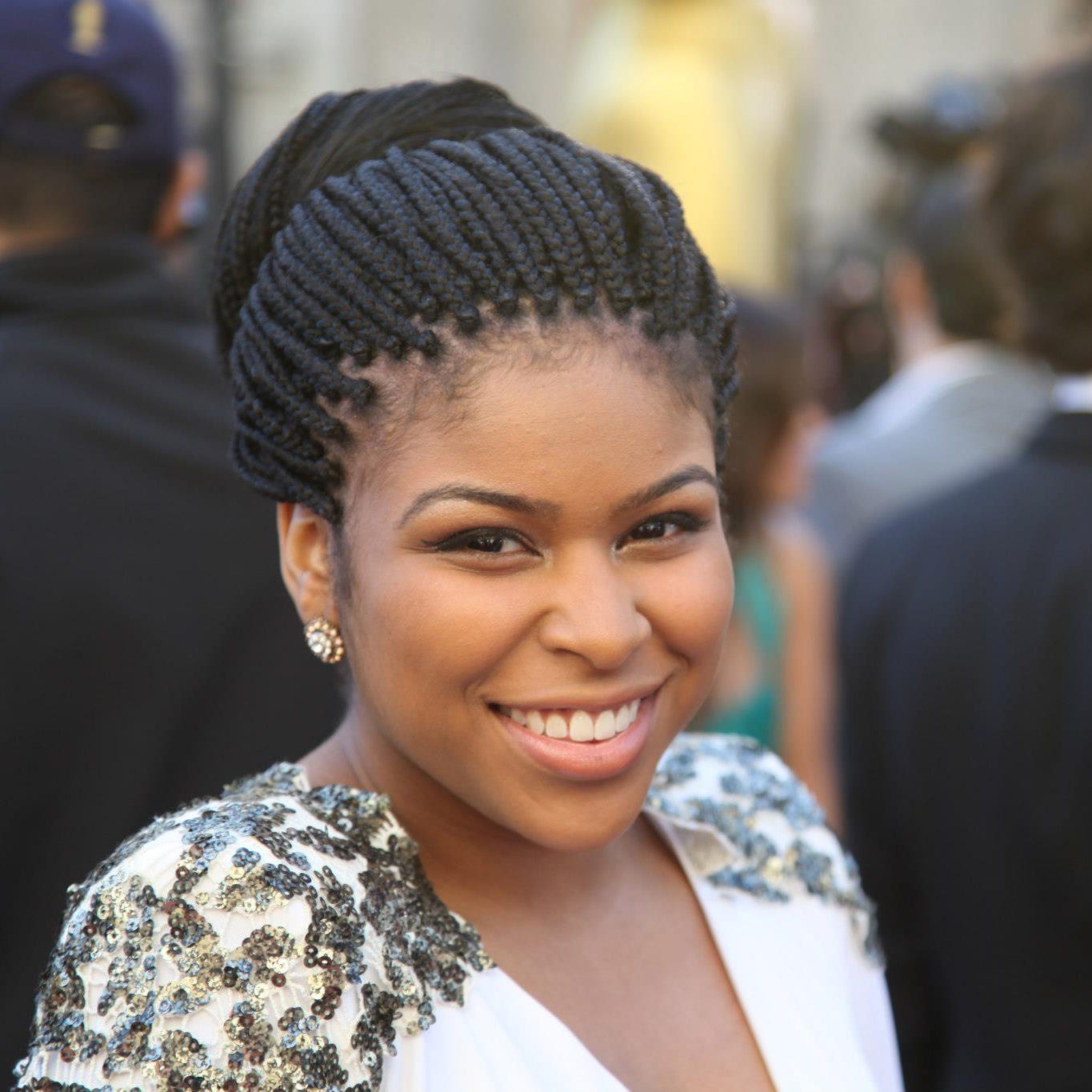Janet Jackson’s Worn-In Braids Have the Most to Say in 'Poetic Justice'
Length: • 7 mins
Annotated by Mark Isero
Janet Jackson’s Worn-In Braids Have the Most to Say in 'Poetic Justice'
What Janet Jackson's era-defining braids in Poetic Justice communicated.
I have to remind myself, often, that Poetic Justice is not a Black rom-com. Technically, it’s a romantic drama. An L.A. love story at that. It also fits into that collection of films based in L.A.; Set If Off, Boyz In the Hood, or Friday. Which is cool... But when I turn on Poetic Justice (1993), I find myself smirking way more than I’m supposed to. Less because of jokes in the script, and more because of the closeness I feel with the female characters and the familiarity of the cultural nods. There is a sense of awareness sunken into the film – the beauty salon, my cousin’s house, a family reunion – and it feels cozy to me. [1]
In promotional photographs of Janet Jackson for Poetic Justice, her smile is neutral and her arms are crossed. She’s giving a demeanor of directness and focus, which is softened by a French manicure. However, even in the side profile, you are drawn to the far-off look in her eyes. What is she staring at?
In Poetic Justice, Jackson plays Justice, a young woman living in Los Angeles in her mid-20s, fresh out of hair school, devastated by the loss of her boyfriend which she witnessed up close. During the majority of the film, Jackson wears a paperboy cap that reads as if she’s had it forever. The cap is more than a “look.” Jackson’s fuzzy box braids rest under that cap and have the most to say during the movie’s runtime – and it is the circumstances that led to those braids that help build Jackson’s character over time.

When we see Justice after the loss of her boyfriend, director John Singleton opens with a scene of her working at a salon. It has all the bells of a buzzy Black beauty salon: a few territorial stylists, kids (this salon actually has a daycare), fast-talking, lots of movement, information exchanged, jokes cracked – and the young mailman who has probably hit on every woman stylist in the spot. That’s 2Pac, playing Lucky, with whom Justice eventually forms a romantic relationship through a trip up to Oakland in Lucky’s mail truck – a trip she’s convinced to go on, thanks to her wayward friend Iesha, played by Regina King. [2]
Justice’s braids – sans cap or scarf – make their second appearance in the most pivotal scene of Poetic Justice. Over the span of the film, we see the progression of Justice’s braids from pristine to worn-in, which is a realistic detail. On the group’s drive back to Los Angeles, after the relationship between Iesha and Chicago (played by Joe Torry) implodes, Lucky stops the truck. All of the characters get out of the truck and argue for various, dramatic reasons. Lucky walks away from his mail truck to cool off and despite her frustration with that man, Justice joins Lucky under a tree. Here, Jackson is her most vulnerable, and it’s when a sincere connection between Lucky and Justice is built.
rw-youtube-embed[ZbUfyzgoDzA]
This scene is not the screenshots that make it to the top of Google Images. Instead, you’ll see face card shots of Jackson with her paperboy cap on. Or, in a white head wrap that pulls her braids into a high ponytail, covering most of her head and those braid parts. These two classic images are recreated on Halloween, every year to my memory. I don’t see jumbo box braids referred to as “poetic justice braids” any longer, but they used to be. In 2014, Beyoncé similarly wore a red scarf in a “Grown Woman” music video scene and it felt like a nod to Jackson in Poetic Justice. Subsequently, the style found its way back into the trend cycle. Poetic Justice braids. Unintentional or not, these fantastic images of Jackson are the ones ingrained into our psyche.
Now – to be very direct – your boyfriend does not have to die for you to end up with less-than-pristine braids. Any Black person who's held on to braids long after that unofficial expiration date has been to the edge of no return. So to think of all the relatable circumstances that lead one further away from booking that next appointment, or setting aside hours to take braids out in front of the television, it is realistic for Jackson to have those blurred parted lines as she plays Justice. Exhaustion, tiredness, long hours on your feet doing other people’s heads, grief, family. Not only are fuzzy braids inevitable, but they are the mark of a fast and fly girl living in any era. In this case, the braids helped Jackson to capture the mundane <> brilliant balance that Black women and femmes often strike. Expertly.

If fresh braids are the equivalent of a fresh attitude and guaranteed self-esteem boost, worn braids represent a certain kind of struggle. It takes time, literally and emotionally, to feel comfortable in worn braids because the idea of neatness plays a role in the way we’ve decided to present ourselves – at some point in time. And if you aren’t able to achieve that, it can lead to low self-esteem, and sometimes depression.
In the same breath, lived-in box braids are just as much of an experience as fresh braids – just a different one. The maintenance is different. TikToks sharing tips and tricks of styles that conceal worn box braid parts, or share ways to make braids “last longer” can attest to this sentiment. You’ll find videos of Black women washing braids for maintenance, or showing how they wrap their braids at night to slow down the worn-in timeline. You’ll see women taking out 4-week-old braids or showing how to style month-old braids into goddess braids. There are tips on how to stretch your braids another week, or how to wash two-week-old cornrows. There still seems to be an inclination toward neatness – or I would even say the maintenance of braids. Still, I like how no one is explaining their circumstance or motive for the braid upkeep in these videos. Black women are sharing what works for them so others can apply the idea to their circumstances. So as you see, it’s all connected and there are a lot of feelings interwoven – and memories for me.
I get flashbacks to being at the mercy of an unpredictable work week in the newsroom with no time to coordinate an appointment I might have to cancel. Or the check I’d spend on getting my hair done instead of another expense I had living in New York City. This was right after college when I was already in the thick of growing out my relaxer. I was working at Dateline NBC in 30 Rock, and I often wore braids because they were an easy transition style – and cut my get-ready time by a third.
As a Broadcast Journalism student, I often wore braids on camera because I felt they pulled my hair back and put a focus on my face as the person telling the story. I didn’t view braids as eccentric, unprofessional, or unkempt. No one ever brought them up to me – at least not to my face – except for a Black professor who questioned my professionalism. Which is neither here nor there to me at this point, and it wasn’t back then.
I wore braids to the 85th Academy Awards in 2013. I knew what I liked – medium box braids, medium thickness. Please note feed in braids were not on trend yet, so the technique used resulted in knots. To be frank, if you could notice them, you were too close. But when they started to get fuzzy, I started to fuss. It was my friends who shook me out of my obsession with “neatness.” This is why you need good friends. In fact, the worn-in braids made me look even more like myself, they expressed. It wasn’t until Zoe Kravitz solidified the messy human hair micro braids that Black girls started to do their spin with synthetic hair, human hair, or a mixture of both. Today, the goal is to make sure the worn braids aren't wearing you. In fact, keeping braids for at least 5 weeks – I would say – is standard.

To say “Respect me no matter how I look” in a world that is fixated on making you run around to fit an aesthetic mold is a muscle that gets stronger with practice. And sure, walking out of the salon with fresh braids will deliver that serotonin hit, but these are braids I will need to make sure I love on days I am not feeling myself.
Jackson’s character sheds light on another aspect: Justice’s braids simply exist during the duration of the movie. She doesn’t address her hair, and neither does anyone else. The paperboy hat is a way of styling her braids without having to say a word, which is a true luxury when it seems that everyone has an opinion about your existence when being quiet should be the real beauty standard.
I was born in Long Beach, CA, however, my parents drove across the country to Buffalo, NY to be closer to family, shortly after I was born. They tell me stories of watching the Cosby Show religiously, every week, and yes, I am named after Raven Symoné because of their love of the show. So L.A. will always be a milestone in my life.
Now, we all should love Regina King, which is why I’m linking to this phenomenal piece by Danielle Henderson.